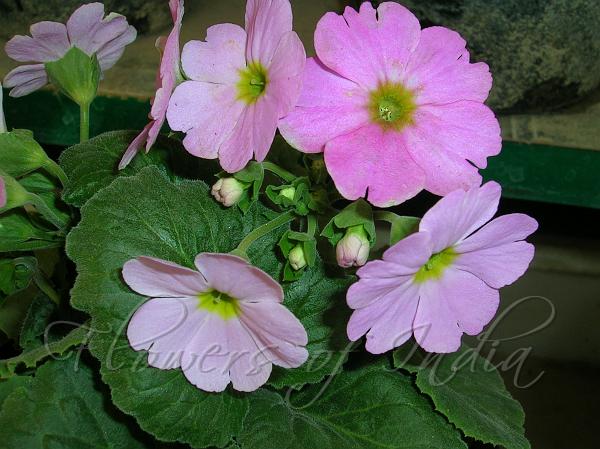|
| Poison Primrose |
|

|

| File size | 670921 |
| Original date | 12/4/05 1:52 PM |
| Resolution | 2048 x 1536 |
| Flash | Flash fired, auto |
| Focal length | 8.0mm |
| Exposure time | 1/60s |
| Aperture | 5.5 |
| Focus Distance | |
| Metering Mode | Partial |
| Camera make | NIKON |
| Camera model | E3700 |
| Sensor type |
|
|
|
|
Photo: |
Botanical name: Primula obconica Family: Primulaceae (Primrose family)
Synonyms: Primula bonatii, Primula poculiformis, Primula petitmenginii
Synonyms: Primula bonatii, Primula poculiformis, Primula petitmenginii
Poison Primrose is a tender perennial herb having
basal, simple, elongated, glandular haired leaves. The flowers are
borne at the top of a naked stem, 5-petaled, broadly funnel-shaped,
pale lilac, purple or white with a yellow or green eye. Flowers are
1.5-2.5 cm across. Sepal-cup is cup-shaped to broadly bell-shaped,
finely velvet-hairy or short hairy, parted to 1/4-1/3; sepals broadly
triangular, fringed with hairs. Leaves form a rosette at the base. Its
leaves are covered with tiny hairs that secrete a toxic substance. If
the leaves are touched, an immediate irritation can occur, forming
blisters. Leaf-stalks are 1.5-14 cm, with white or tawny multicellular
hairs; leaf blade ovate-rotund to elliptic or oblong, 3-14 x 2.5-11 cm,
below hairless or sparsely hairy, especially along veins, above
becoming hairless, finely velvet-hairy or short hairy, base
heart-shaped or occasionally rounded, margin nearly entire, wavy or
sinuate-lobulate, tip rounded. Poison Primrose is found in thickets,
forests, on rocks in mountain woods, dry limestone cliffs, in SE China,
at altitudes 500-3300 m. It is widely cultivated as a garden plant. In
China it is used as a poison and has environmental uses.
| Identification credit: Tabish | Photographed in Delhi & Gangtok. |
• Is this flower misidentified? If yes,